Login
Registration enables users to use special features of this website, such as past
order histories, retained contact details for faster checkout, review submissions, and special promotions.
order histories, retained contact details for faster checkout, review submissions, and special promotions.
Forgot password?
Registration enables users to use special features of this website, such as past
order histories, retained contact details for faster checkout, review submissions, and special promotions.
order histories, retained contact details for faster checkout, review submissions, and special promotions.
Quick Order
Products
Antibodies
ELISA and Assay Kits
Research Areas
Infectious Disease
Resources
Purchasing
Reference Material
Contact Us
Location
Corporate Headquarters
Vector Laboratories, Inc.
6737 Mowry Ave
Newark, CA 94560
United States
Telephone Numbers
Customer Service: (800) 227-6666 / (650) 697-3600
Contact Us
Additional Contact Details
Login
Registration enables users to use special features of this website, such as past
order histories, retained contact details for faster checkout, review submissions, and special promotions.
order histories, retained contact details for faster checkout, review submissions, and special promotions.
Forgot password?
Registration enables users to use special features of this website, such as past
order histories, retained contact details for faster checkout, review submissions, and special promotions.
order histories, retained contact details for faster checkout, review submissions, and special promotions.
Quick Order
PathPlusTM CAV1 / Caveolin 1 Antibodies
CAV1 is a scaffolding protein encoded that is a primary component of caveolae plasma membranes in most cell types. CAV1 plays an important role in cell metabolism and is involved in autophagy, fatty acid metabolism, glutaminolysis, glycolysis and mitochondrial bioenergetics. Mutations in this gene have been associated with Berardinelli-Seip congenital lipodystrophy. In cancer, CAV1 can be a driver of tumorigenesis and also a suppressor in different contexts. For example, it appears to have an oncogenic role and may be an effective target of therapy in triple negative breast cancer with aberrant TP53 expression. Conversely, higher expression of CAV1 in some liver cancer patients is associated with improved survival, and loss of CAV1 alongside APC knockout has been shown to increase colorectal tumorigenesis. In immunohistochemistry of normal tissue, it has membranous positivity in endothelial cells, adipocytes, as well as pneumocytes and basal cells of squamous epithelia in various tissues throughout the body.
References: The UniProt Consortium. Nucleic Acids Res. 47: D506-515 (2019); Nucleic Acids Res. 2016 Jan 4;44(D1):D733-45, PMID:26553804; Onco Targets Ther. 2019; 12: 1539–1552, PMID: 30881011; Mol Cancer 15, 71 (2016), DOI:10.1186/s12943-016-0558-7; Journal of Clinical Oncology 2015 33:28_suppl, 134-134, DOI: 10.1200/jco.2015.33.28_suppl.134;
6 PathPlusTM Antibodies
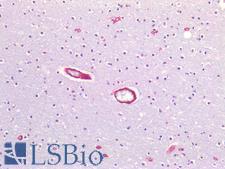
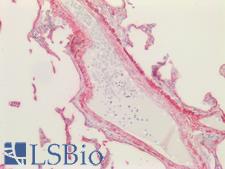
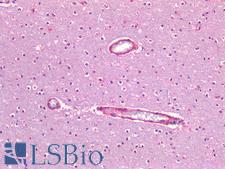
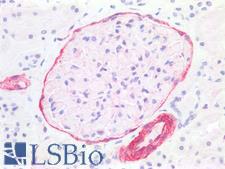

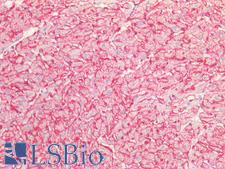
☰ Filters
Products
Antibodies
(6)
Type
Primary
(6)
Target
CAV1 / Caveolin 1
(6)
Reactivity
Human
(4)
Mouse
(4)
Rat
(2)
Bat
(1)
Bovine
(1)
Dog
(1)
Guinea pig
(1)
Horse
(1)
Monkey
(3)
Pig
(1)
Rabbit
(1)
Sheep
(1)
Application
IHC-P
(6)
WB
(4)
ICC
(2)
IF
(2)
Peptide-ELISA
(1)
Host
rabbit
(5)
goat
(1)
Product Group
PathPlus Cancer
(5)
PathPlus Cancer Pathology
(6)
Isotype
IgG
(1)
Clonality
polyclonal pc
(6)
Format
Unconjugated
(6)
Epitope
N-Terminus
(2)
C-Terminus
(1)
aa1-104
(1)
aa2-105
(1)
aa73-84
(1)
Publications
No
(4)
Yes
(2)

Cancer Pathology
Cancer
CAV1 / Caveolin 1 Rabbit anti-Human Polyclonal (N-Terminus) Antibody
Rabbit, Mouse, Dog, Guinea pig, Sheep, Bovine, Rat, Pig, Horse, Bat, Human, Monkey
IHC-P
Unconjugated
50 µg/$395

Cancer Pathology
Cancer
CAV1 / Caveolin 1 Goat anti-Human Polyclonal (aa73-84) Antibody
Human, Monkey
IF, IHC-P, Peptide-ELISA, WB
Unconjugated
50 µg/$485

Cancer Pathology
Cancer
Fast Shipping
CAV1 / Caveolin 1 Rabbit anti-Human Polyclonal (N-Terminus) Antibody
Human, Monkey
IHC-P
Unconjugated
50 µg/$395

Cancer Pathology
CAV1 / Caveolin 1 Rabbit anti-Rat Polyclonal (aa2-105) Antibody
Mouse
ICC, IHC-P, WB
Unconjugated
50 µl/$375

Cancer Pathology
Cancer
CAV1 / Caveolin 1 Rabbit anti-Human Polyclonal (C-Terminus) Antibody
Mouse, Rat, Human
ICC, IF, IHC-P, WB
Unconjugated
50 µl/$375

Cancer Pathology
Cancer
CAV1 / Caveolin 1 Rabbit anti-Mouse Polyclonal (aa1-104) Antibody
Mouse
IHC-P, WB
Unconjugated
50 µl/$375
Viewing 1-6
of 6
product results











